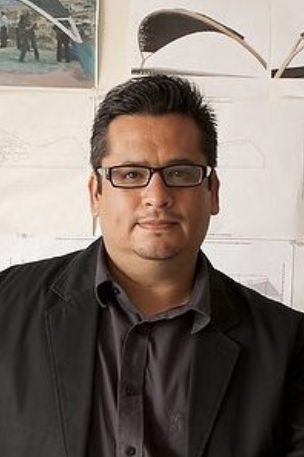René Peralta on Temporary Paradise and Development in San Diego
School of architecture adjunct professor René Peralta recently co-edited a commemorative reprint of the report “Temporary Paradise?” by Kevin Lynch and Donald Appleyard. Originally released in 1974 by MIT’s Department of Urban Studies and Planning, the report explored sustainable growth in the San Diego region. Peralta co-edited the reprint with Tito Alegria of COLEF and Roger Lewis of C3 to stress how the ideas set forth in the original report are still relevant today.
Temporary Paradise?
A Look at the Special Landscape of the San Diego Region
Temporary Paradise includes a series of contemporary essays examining the development of San Diego since 1974. The report explores the redevelopment of major properties and landmarks across the city. As Peralta has said, there needs to be critical engagement and attention given to San Diego’s future.
 “Way before the issues with climate change and sustainable development, Lynch and Appleyard back in 1974 understood that the challenges of the region would be how to handle economic growth with ecological sustainability,” says Peralta. “I believe San Diego has done a good job in preserving its natural habitat but has not had a great urban development strategy. Today the housing stock is limited and unaffordable and sprawl and segregation (by income and race) continues to be the modus operandi.”
“Way before the issues with climate change and sustainable development, Lynch and Appleyard back in 1974 understood that the challenges of the region would be how to handle economic growth with ecological sustainability,” says Peralta. “I believe San Diego has done a good job in preserving its natural habitat but has not had a great urban development strategy. Today the housing stock is limited and unaffordable and sprawl and segregation (by income and race) continues to be the modus operandi.”
While the future of a city is often driven by market forces and developer’s bottom line, architects and designers can engage in these conditions to bring about change. “That is why I believe programs like Woodbury’s MSArch RED are critical in the retraining of architects,” says Peralta.
Known for work directed toward the social and cultural forms of the urban border of the United States and Mexico, Rene continues his research through the lens of Tijuana and San Diego. His practice searches for expedient and alternative methods to urban design in contested global territories working alongside academia, NGO’s and government agencies. Currently his firm, Generica, is working on designing participatory community design, public art, ecological urban infrastructure and urban economic development on both sides of the border.
Looking to the future, Rene hopes to change the contemporary rhetoric on the border condition.
“One of the reasons we think it was important to reprint this report was because these ideas are far from being achieved. The region is now overwhelmed by discussions of the wall and border security. Today, the socio-economic growth of the region between both cities is unprecedented. According to a report by the San Diego Union San Diego – Tijuana is a $230 billion economic engine with over 5 million residents and nearly 2 million employees. We believe it’s important to continue to foster bi-national and cross border cooperation rather than get stuck in useless border wall politics.”
Find out more about Temporary Paradise.
Discover our MSArch RED program